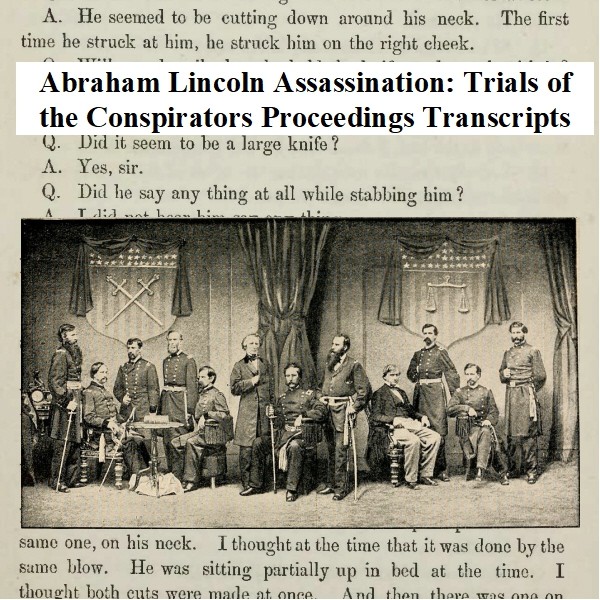
Abraham Lincoln Assassination: Trials of the Conspirators Proceedings Transcripts
$19.50
Description
Lincoln Assassination: Timeline and Key Figures
Timeline of Events
- December 23, 1864: Dr. Samuel Mudd introduces John H. Surratt Jr. to John Wilkes Booth. Surratt agrees to help Booth in a plan to kidnap President Abraham Lincoln.
- March 17, 1865: Booth, Surratt, and their comrades wait in ambush for President Lincoln’s carriage to return to Washington D.C. from the Campbell General Hospital. However, Lincoln changes his plans and remains in Washington.
- April 14, 1865: President Abraham Lincoln is assassinated by John Wilkes Booth at Ford’s Theatre in Washington D.C. (This event is the central crime leading to the trials, although the source focuses on the aftermath).
- April-May 1865: Following the assassination, a widespread manhunt for the conspirators ensues. John H. Surratt Jr. flees the country, eventually reaching Canada and then Europe.
- May – June 1865: Eight individuals are arrested and brought before a military commission for their alleged involvement in the conspiracy to assassinate President Lincoln and other government officials: David E. Herold, Mary E. Surratt, Lewis Payne, George A. Atzerodt, Edward Spangler, Samuel A. Mudd, Samuel Arnold, and Michael O’Laughlin.
- May – June 1865: The trials of the eight alleged conspirators are held before a military commission. Benn Pitman is contracted to transcribe the proceedings. Benjamin Perley Poore also records the trial, with his account considered one of the most complete, though published in three volumes with some omissions.
- June 27-28, 1865: Special Judge Advocate John A. Bingham delivers his closing arguments to the military commission, arguing for the guilt of all conspirators based on the principle of “common design,” implicating even those who did not directly carry out the attacks. He also suggests the involvement of Confederate leaders, including Jefferson Davis.
- 1865: The military commission reaches its verdict. Mary E. Surratt, David E. Herold, Lewis Payne, and George A. Atzerodt are sentenced to death by hanging. Samuel A. Mudd, Samuel Arnold, and Michael O’Laughlin are sentenced to prison. Edward Spangler receives a lesser sentence.
- July 7, 1865: Mary E. Surratt, David E. Herold, Lewis Payne, and George A. Atzerodt are executed by hanging.
- Late 1866 – Early 1867: John H. Surratt Jr., who had been in hiding, is recognized and arrested while serving as a guard to the Pope in Europe. He escapes to Egypt but is eventually apprehended and extradited to the United States.
- June 10, 1867: The trial of John H. Surratt Jr. begins in the Supreme Court of the District of Columbia, with Judge George P. Fisher presiding. Richard T. Merrick serves as his defense attorney. The charges against him relate to the murder of President Lincoln.
- June – August 1867: The trial of John H. Surratt Jr. proceeds, with detailed testimonies and arguments presented.
- 1867: The jury in John H. Surratt Jr.’s trial is unable to reach a verdict, resulting in a mistrial. He is eventually released, as the statute of limitations had expired on most potential charges.
- 1867: Publication of “Life and Extraordinary Adventures of John H. Surratt, The Conspirator,” an anonymous account of his life and trial.
- 1867: Publication of Richard T. Merrick’s speech to the jury during John H. Surratt Jr.’s trial.
- 1867: Publication of the official government transcript of the “Trial of John H. Surratt in the Criminal Court for the District of Columbia.”
Cast of Characters and Brief Bios
- Abraham Lincoln: The 16th President of the United States, assassinated by John Wilkes Booth on April 14, 1865. His assassination is the central event leading to the trials discussed in the sources.
- John Wilkes Booth: The assassin of President Abraham Lincoln. He was a well-known actor and a Confederate sympathizer. He was killed several days after the assassination while resisting arrest.
- John H. Surratt Jr.: Accused of being a key participant in the conspiracy to kidnap and potentially assassinate President Lincoln. He avoided immediate arrest by fleeing the country and was tried separately in 1867. The jury in his trial failed to reach a verdict.
- Mary E. Surratt: The owner of a boarding house in Washington D.C. where the conspirators frequently met. She was accused of aiding and abetting the conspiracy. She was tried by the military commission and executed by hanging, becoming the first woman executed by the U.S. Federal government.
- David E. Herold: Assisted Lewis Payne in his attempted assassination of Secretary of State William H. Seward and later accompanied John Wilkes Booth in his flight after Lincoln’s assassination. He was captured with Booth and executed by hanging.
- Lewis Payne (also known as Lewis Powell): Attempted to assassinate Secretary of State William H. Seward on the night of Lincoln’s assassination, severely wounding him and several others in his household. He was tried and executed by hanging.
- George A. Atzerodt: Assigned the task of assassinating Vice-President Andrew Johnson, but he failed to carry out the act. He was tried and executed by hanging.
- Edward Spangler: A scene shifter at Ford’s Theatre. He was accused of aiding Booth’s escape and was convicted and sentenced to prison.
- Samuel A. Mudd: A doctor who treated John Wilkes Booth’s broken leg after the assassination. He was accused of being part of the conspiracy and was convicted and sentenced to prison. He maintained his innocence.
- Samuel Arnold: Involved in the earlier plot to kidnap President Lincoln. He was arrested after the assassination and convicted and sentenced to prison.
- Michael O’Laughlin: Another participant in the earlier kidnapping plot. He was arrested after the assassination and convicted and sentenced to prison, where he later died.
- Benn Pitman: Recorder to the Military Commission. He was an expert in phonography and was responsible for transcribing the daily testimony during the trials of the conspirators. His edited publication is considered an accessible version of the trial proceedings.
- Benjamin Perley Poore: A prominent newspaper correspondent and editor who also recorded the trial proceedings. His three-volume work is considered the most complete transcript, though it has some omissions in its published form.
- John A. Bingham: Special Judge Advocate who served as a prosecutor during the trials of the conspirators before the military commission. He delivered the closing arguments for the prosecution, arguing for the collective guilt of the conspirators. He later served as a prosecutor in the impeachment trials of President Andrew Johnson.
- Richard T. Merrick: The defense attorney for John H. Surratt Jr. during his trial in 1867. He delivered a speech to the jury arguing for Surratt’s innocence.
- George P. Fisher: A Justice of the Supreme Court for the District of Columbia who presided over the trial of John H. Surratt Jr. in 1867.
- Jefferson Davis: The President of the Confederate States of America. John A. Bingham accused him and other Confederate leaders of instigating the conspiracy, although they were never charged in connection with the assassination.
Abraham Lincoln Assassination: Trials of the Conspirators Proceedings Transcripts
4,869 pages in 12 volumes of overlapping transcripts, trial accounts and reporting of the trials of the Lincoln Assassination conspirators.
Because the different sources of trial transcriptions for the trials of the conspirators have carrying coverage of the trials, it is best to consult more than one source
This collection has:
The Assassination of President Lincoln and the Trial of the Conspirators
Full Title: The Assassination of President Lincoln and the Trial of the Conspirators David E. Herold, Mary E. Surratt, Lewis Payne, George A. Atzerodt, Edward Spangler, Samuel A. Mudd, Samuel Arnold, Michael O’Laughlin. Compiled and arranged by Benn Pitman, Recorder to the Commission. Cincinnati; New York: Moore, Wilstach & Boldwin, 1865. xvi, 17-421
Benn Pitman won the government contract to transcribe the testimony given in court every day of the trials of the conspirators. Pitman was an expert in phonography an early form of shorthand. Pitman’s brother was the creator of the Pitman Shorthand System. His transcript was made available to the prosecution, defense and members of the press. The use of several reporters using shorthand made Pitman’s transcription the most accurate.
Out of the several different versions of transcripts of the trials, many find Pitman’s edited publishing the most accessible version. Pitman was able to distill 4,300 pages of transcription into a single volume of four-hundred and twenty-six double spaced pages. Pitman decided to collate the testimony by defendant, indexed the testimony by name and date, and added summaries of the testimony. It contains the Attorney General’s justifications for the use of a military court for the trial, rather a than civilian one and the closing argument of Special Judge Advocate John A. Bingham.
Users of this volume will find detailed testimony and arguments presented for and against each defendant. For Mary Surratt, the first woman executed by the Federal government, there is a thirty-page segment which gathers the evidence for and against her (pp. 113-143).
John Harrison Surratt Jr. is mentioned numerous times in the courtroom testimony of the Lincoln conspirators compiled by Benn Pitman, but he was not one of the defendants tried by the government at the time. Thought by the government to be a key participant in Booth’s plot against Abraham Lincoln, his photograph was prominently displayed on wanted posters and a $25,000 reward was offered for his arrest.
The Conspiracy Trial for the Murder of the President and the Attempt to Overthrow the Government by the Assassination of its Principal Officers. Edited, with an introduction, by Ben. Perley Poore. Boston: J.E. Tilton and Company, 1865-66.
Benjamin Perley Poore was a prominent American newspaper correspondent, editor, and author in the mid-19th century. One of the most popular and prolific journalists of his era, he was an active partisan for the Whig and Republican parties. Poore also served as clerk of the Senate committee on printing public records, edited the Congressional Directory in 1869.
Poore’s record was used by the defense counsel, as well as the Military Commission, as a daily guide to what had transpired in the courtroom the previous day.
This three-volume work is the generally considered the most complete.
Poore provides complete testimonies, verbatim question-and-answer transcript of the trial, presented without a table of contents or index but in the exact sequence of witnesses during the proceedings. His three-volume work was published in limited quantities and, in the original, makes for an extremely rare find today. The Library of Congress only has two of the three volumes. A fourth and final volume of the trial transcript was never released due to poor sales. Poore’s editions, therefore, are missing the June 13 testimonies of around twenty witnesses and the closing arguments.
This collection includes exact copies of original copies of volumes 1 & 2 and transcription of a copy of volume 3.
Trial of The Conspirators, for the Assassination of President Lincoln, &C. Argument of John A. Bingham, Special Judge Advocate, In Reply to the Arguments of the Several Counsel, by John Armor Bingham.
Full Title: Trial of The Conspirators, for the Assassination of President Lincoln, &C. Argument of John A. Bingham, Special Judge Advocate, In Reply to the Arguments of the Several Counsel for Mary E. Surratt, David E. Herold, Lewis Payne, George A. Atzerodt, Michael O’Laughlin, Samuel A. Mudd, Edward Spangler, and Samuel Arnold, Charged with Conspiracy and Murder of Abraham Lincoln, Late President of the United States. Delivered June 27 and 28, 1865, before the Military Commission, Washington, D.C. Washington: Govt. Print. Office, 1865.
Uniquely this trial account comes from one of its participants. John Armor Bingham (1815-1900) was an American Republican Representative from Ohio, an assistant Judge Advocate General in the trial of the Abraham Lincoln assassination, and a prosecutor in the impeachment trials of U.S. President Andrew Johnson.
In this volume originally published by the Government Printing Office, Bingham proports that the conspirators aided the rebellion and undermined the Constitution. Bingham accuses Jefferson Davis (president of the Confederate States) and other rebel leaders of involvement and instigation in the conspiracy, though never charged. He held that everyone involved with the conspiracy is guilty by way of “common design.” Bingham argues that there should be no distinction between those were simply involved in the plotting of the conspiracy and those who carried out the vicious attacks.
Assistant Judge Advocate Bingham interjected during the trial that each of the defendants was alleged to have committed the assaults themselves because “the act of any one of the participants to a conspiracy in its execution, is the act of every party to that conspiracy,” such that when the President was slain by the “hand of Booth,” he was “murdered by every one of the parties to this conspiracy.”
Life and Extraordinary Adventures of John H. Surratt, The Conspirator A Correct Account and Highly Interesting Narrative of His Doings and Adventures from Childhood to the Present Time. (1867) Author Anonymous
The copy reproduced in this collection contains pages l, 21-24, 37-40, and 43-136. “Trial of John H. Surratt, conspirator, for the murder of Abraham Lincoln” are pages 43-136.
Known as “The One Who Got Away,” John Harrison Surrat Jr. was accused of plotting with John Wilkes Booth to kidnap U.S. President Abraham Lincoln; he was also suspected of involvement in the Abraham Lincoln assassination. He avoided arrest immediately after the assassination by fleeing to Canada and then to Europe. He thus avoided the fate of the other conspirators, who were hanged. He served briefly as a guard to the Pope, but was recognized and arrested and escaped to Egypt, but was eventually arrested and extradited. By the time of his trial, the statute of limitations had expired on most of the potential charges.
Dr. Samuel Mudd introduced Surratt to Booth on December 23, 1864, and Surratt agreed to help Booth kidnap Lincoln. Booth’s plan was to seize Lincoln and take him to Richmond, Virginia, to exchange him for thousands of Confederate prisoners of war. On March 17, 1865, Surratt and Booth, along with their comrades, waited in ambush for Lincoln’s carriage to leave the Campbell General Hospital to return to Washington. However, Lincoln had changed his mind and remained in Washington.
Merrick, Richard T. Speech to the jury of Richard T. Merrick, Esq., on the trial of John H. Surratt, in the Supreme court of the District of Columbia, sitting for the trial of crimes and misdemeanors, on an indictment for murder of President Lincoln : before His Honor George P. Fisher, one of the justices of the Supreme Court for the District of Columbia, commencing Monday, June 10, 1867. Washington City, D.C. : R. Sutton, 1867. 16, 15 p. ; 27 cm. A separate printing from the Reporter, v. IV, nos. 96-97, September 10-11, 1867. Pages also numbered [427], 428-454, [455].
Other volumes include:
Trial of John H. Surratt in the Criminal Court for the District of Columbia, Hon. George P. Fisher Presiding. Washington: Government Printing Office, 1867. Trial in the Supreme Court of the District of Columbia, Sitting for the Trial of Crimes and Misdemeanors, June-August, 1867, for the Murder of President Lincoln
Full Title: Trial of John H. Surratt in the Criminal Court for the District of Columbia, Hon. George P. Fisher Presiding. Washington: Government Printing Office, 1867. Trial in the Supreme Court of the District of Columbia, sitting for the trial of crimes and misdemeanors, June-August, 1867, for the murder of President Lincoln. 1,383 pages in two volumes.
Speech to the Jury of Richard T. Merrick, Esq., On the trial of John H. Surratt, In the Supreme Court of the District of Columbia, Sitting for the Trial of Crimes And Misdemeanors by Richard T. Merrick.
Full Title: Speech to the Jury of Richard T. Merrick, Esq., On the trial of John H. Surratt, In The Supreme Court of the District Of Columbia, Sitting for the Trial of Crimes And Misdemeanors, On an Indictment for Murder of President Lincoln: before His Honor George P. Fisher, one of the justices of the Supreme Court for the District of Columbia, commencing Monday, June 10, 1867. Washington City, D.C. : R. Sutton, 1867. 16, 15 p. ; 27 cm. A separate printing from the Reporter, v. IV, nos. 96-97, September 10-11, 1867. Pages also numbered [427], 428-454, [45
Trial of John H. Surratt in the Supreme Court of the District of Columbia
Full Title: Trial of John H. Surratt in the Supreme Court of the District of Columbia, sitting for the trial of crimes and misdemeanors, on an indictment for murder of President Lincoln before His Honor George P. Fisher, one of the justices of the Supreme Court of the District of Columbia, commencing Monday, June 10, 1867. Washington city, D.C., 1867. In The reporter. A periodical devoted to religion, law, legislation, and public events. Washington City, D.C., 1867.)
Trial of the Assassins and Conspirators for the Murder of Abraham Lincoln, and the Attempted Assassination of Vice-President Johnson and the Whole Cabinet: The Most Intensely Interesting Trial on Record: Containing The Evidence In Full, With Arguments of Counsel On Both Sides, And The Verdict Of The Military Commission: Correct Likenesses and Graphic History of all the Assassins, Conspirators, And Other Persons Connected With Their Arrest and Trial.
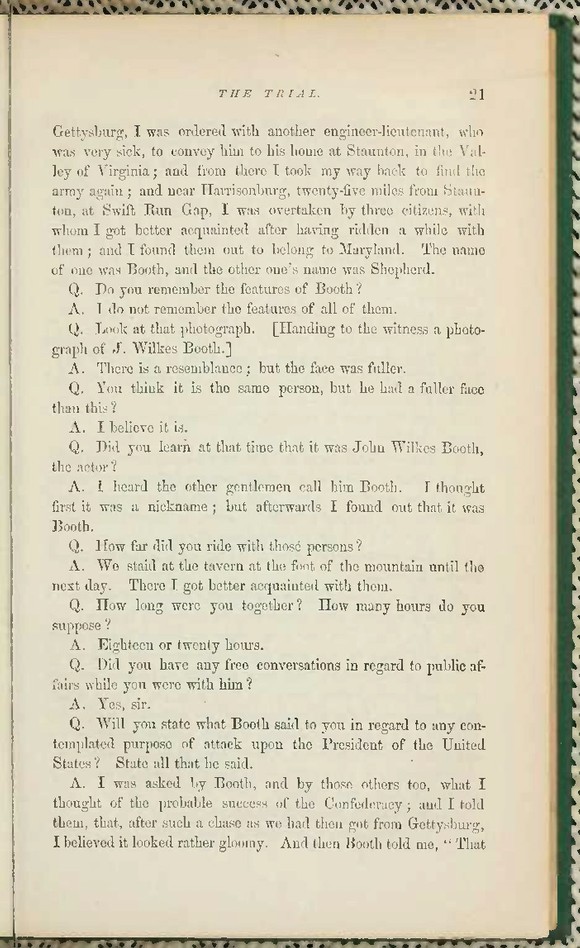

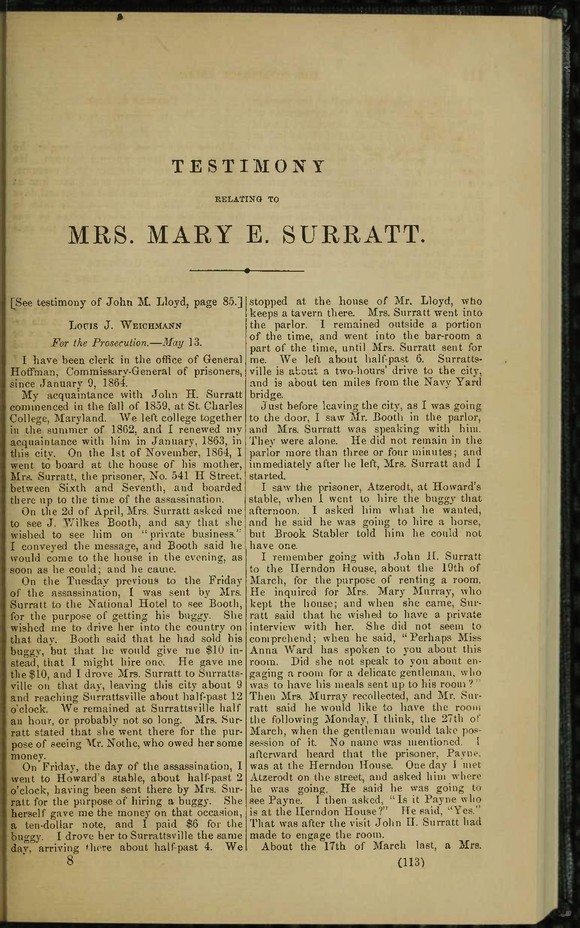
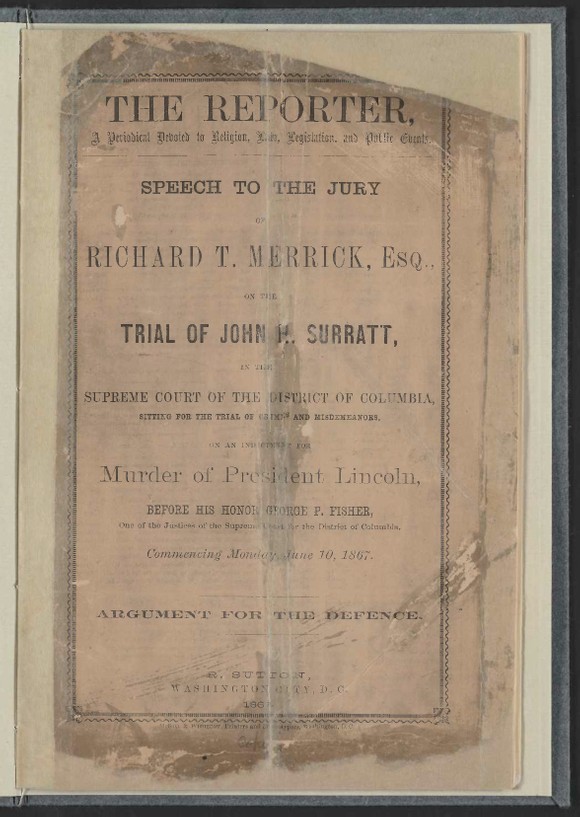
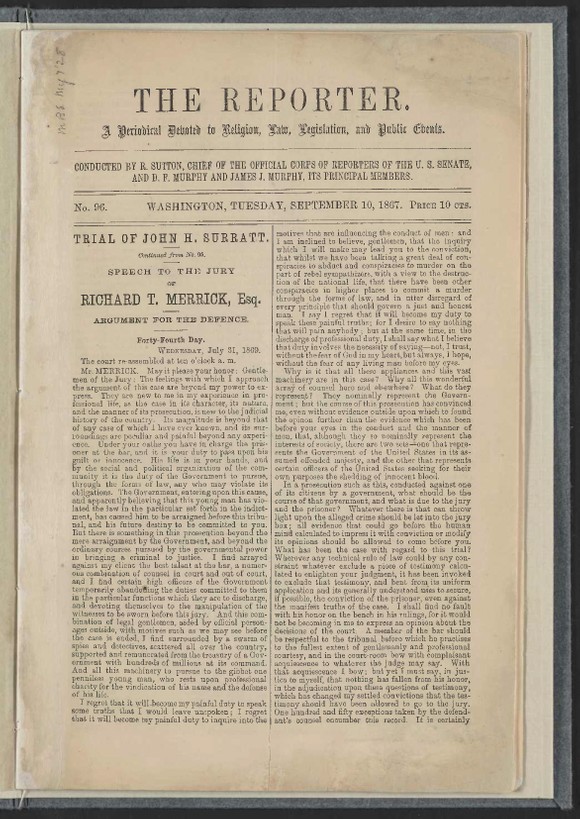


Related products
-

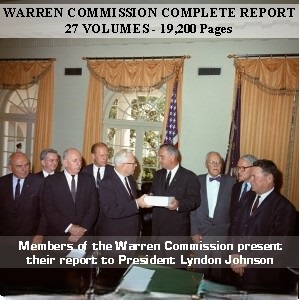
Warren Commission Report: 27 volumes, 19,200 pages
$19.50 Add to Cart -
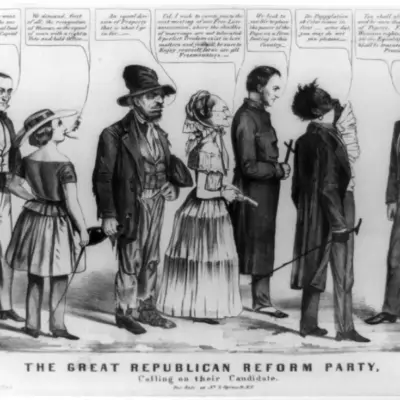
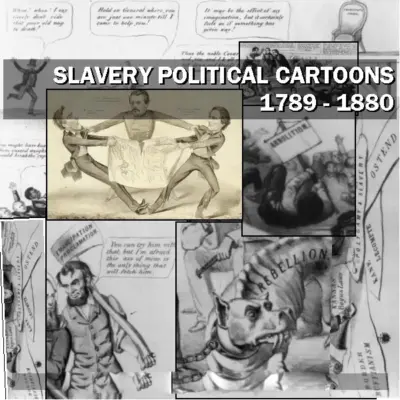
Slavery Political Cartoons: Cartoon Slavery 1789 – 1880
$19.50 Add to Cart -

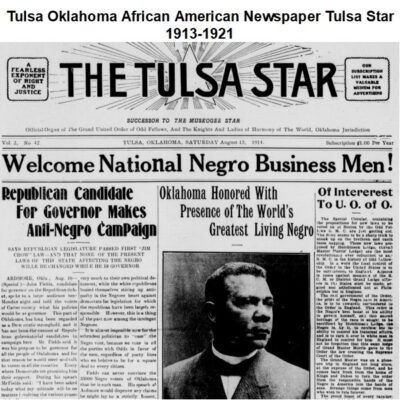
Tulsa Oklahoma African American Newspaper Tulsa Star 1913-1921
$9.90 Add to Cart -
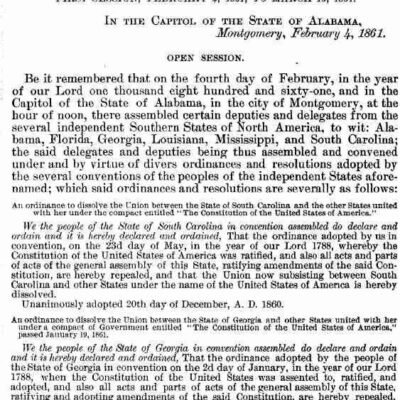

Journal of the Congress of the Confederate States of America 1861-1865
$19.50 Add to Cart